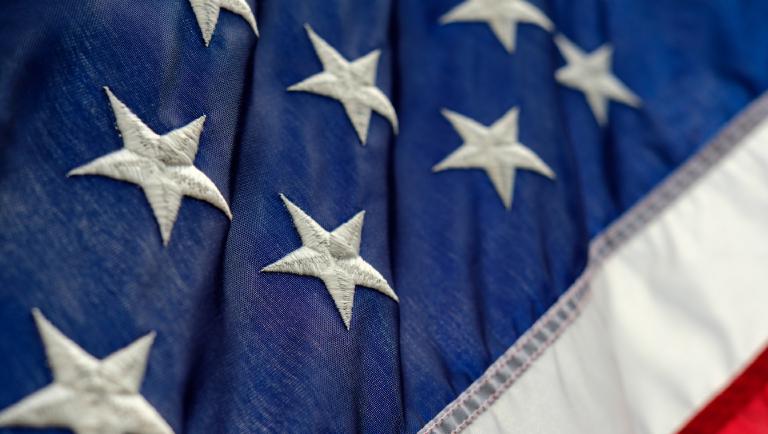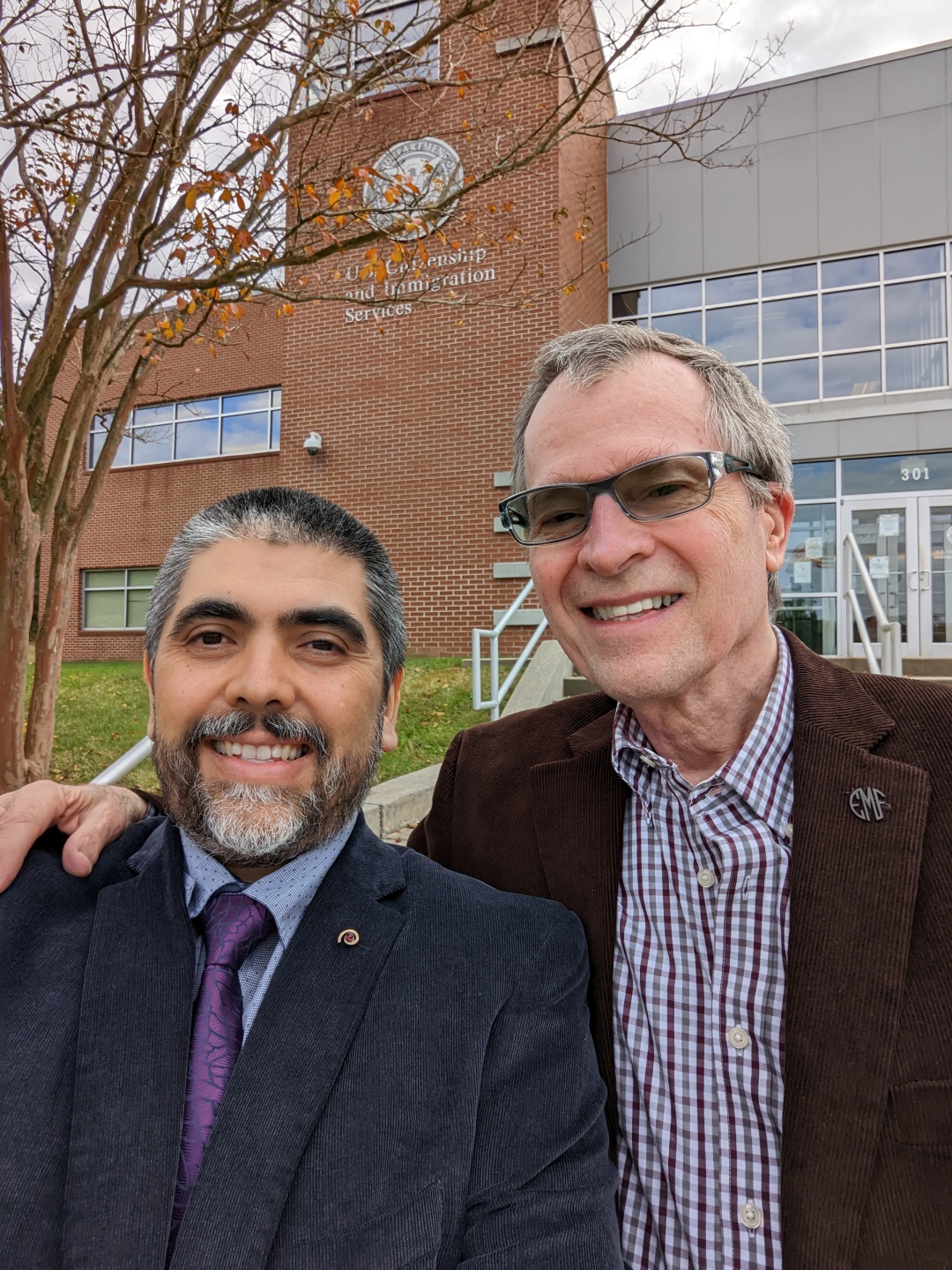Life Itself
I am an American Citizen
After living in the United States for 13 years, I finally became a citizen today.

One of my New Year’s resolutions this year was finally getting all my paperwork done and becoming a US citizen. I completed the application in January, paid all the fees involved (which were very steep), and waited patiently to hear back. I did all the filing online, which made the process very easy. The best part was to get a place where I could follow the status of my case. Back then, they estimated 12 months before a resolution.
I checked in regularly to see if there were any changes. Shortly after I applied, a note on the system indicated that I didn’t have to provide biometrics info.
The wait continued until September. Then, I received a citation to appear for my citizenship interview today.
The prep work
All I had to do to prepare for the interview was to study for the infamous naturalization test. There is a pool of 100 questions, of which they choose 10 to ask during the interview. You need to answer just six correctly.
I made flash cards. I wrote them by hand because the act of writing helps me retain information. I kept them all this time near my desk, and I would look at them at random moments during the day. Every night, I would shuffle the cards and hand them to my husband, who’d then quiz me.
The questions aren’t that hard to memorize. If you follow the news, you know your local officials, senators, governors, representatives, etc. And the geography questions are simple, too. You probably already know which ocean is on which coast.
The most challenging questions to memorize were the history ones. No surprise there since I didn’t learn American history in school. Not that I would remember it, either; I don’t remember much of history class at all.
Interview day
The letter you receive with your interview information has all the instructions you need to follow. I did what the letter told me, and my experience was smooth and efficient.
I arrived at the place 15 minutes before the 10:00 AM scheduled time. The first stop was a security check-in. After that, they told me to wait in a waiting room until they called me.
At about 9:50 AM, they called me to check in for the interview. They scanned the appointment letter and told me to return to the waiting room until they called me again.
While I waited a second time, I noticed that I was the most dressed-up person. I chose to wear a shirt and a tie, some pants with a crease in the front, leather shoes, and a sport coat. Nothing you wouldn’t see at an office or a bank. Mostly business attire. I saw a few ladies wearing pant suits, too. But some people wore jeans and sneakers, leggings, or fleece polars. I still felt confident in my choice. After years of working from home, dressing up for a change felt good.
The interview
At about 10:10 AM, a lady called me in for the interview. She walked me to an office where I met the interviewer. His name was Anderson, and he was very cordial and welcoming. I told him I was nervous; he said I didn’t have to. He had looked at my case and was familiar with the documents I had already presented.
Right off the top, one of our first interactions set the tone for the interview. Anderson asked me about my birthday. I told him, “December 16th.” He kept waiting for me to continue, and when I realized he was waiting for the year, I told him, “You did say birthday, not date of birth.”
He laughed and agreed with me. “Semantics matter,” he said.
We got the reading and writing part of the interview out of the way. He asked me to read a sentence from an iPad in front of me. I don’t remember the sentence, but it was something about Lincoln. All I had to do was read it out loud.
Then, he asked me to write on the iPad the sentence, “Lincoln was president during the Civil War.” The hardest part of that was writing something legible on the iPad.
The next part was the quiz. Anderson told me I only needed to get six correct answers from the ten questions he had for me. At this point, I am trying to remember all the questions he asked. I recall:
- How many US Supreme Court Justices are there? (Nine)
- Name two cabinet-level positions. (The vice president and the Secretary of State)
- When do we celebrate Independence Day?
I remember the question about Independence Day because, after I gave him the correct answer, he commented that this was a day, not a date, so the correct answer was July 4th, not July 4th, 1776. A throwback to the beginning of the interview. Nice.
After that, we discussed my marriage. Anderson asked me when I got married, and when I told him my 9th anniversary was yesterday, he congratulated me. He asked me what we did to celebrate, and I explained that we had both forgotten about the anniversary because we’d been preparing for the interview. Anderson immediately went online and searched for 9th-anniversary wedding gifts and told me I still had time to go and buy something to celebrate. He was that kind.
The final part of the interview was the yes/no questions from the application form. All you have to do is answer what you initially wrote in the form.
And that was the end of the interview. I had to review and sign some information on the iPad, and it was all over. It was about 10:30. The whole process took about 20 minutes.
The naturalization ceremony
After the interview, Anderson walked me to a large room to meet Knuckles. This gentleman was going to administer the Oath of Allegiance to several of us as the last step in the naturalization process. I received a package with a letter from the President in nice official White House stationary, some reading material about becoming a citizen, and the most important thing: my Citizenship Certificate.
I saw some of the same people from earlier in the waiting room. The gentleman with the jeans and sneakers. The lady with the pantsuit. The person with the leggings and the fleece polar. We had all passed!
After a few minutes, Knuckles administered the oath. We had to stand up, raise our right hand, and repeat the oath after him. The moment was very solemn, and I was proud to participate. I was sad my husband wasn’t allowed to witness it, though.
After the oath, Knuckles gave us further instructions, and we were all done. I had become an American Citizen!
Knuckles explained that the certificate of citizenship worked the same as a birth certificate and that we had been “reborn as American Citizens” on that day. When he put it that way, it felt a bit weird. But it is accurate. I had left behind everything I had known for years to start as a citizen in a new country. It is a big deal.

I entered the building as a resident alien and walked out as an American Citizen.
Practicing citizenship: registering and early voting.
I entered the building as a resident alien and walked out as an American Citizen. My husband was waiting for me, so we took a few pictures. We went home for lunch, and then we headed out to put it all to practice: I did same-day registration and voted early in the midterm elections!
The voting place was busy, but things were moving smoothly. There were almost as many poll workers as voters.
All I needed to register was to show my driver’s license, which included my address. A lady typed all the info into a laptop, pushed some buttons, and then told me I was all registered. She gave me a piece of paper; I brought it to another lady who gave me a ballot and… I voted!
And now, what?
The following steps in my life as an American Citizen are getting my Social Security status updated and getting an American passport. But as of today, I’m as American as Apple Pie.

